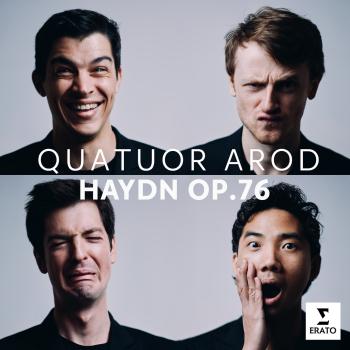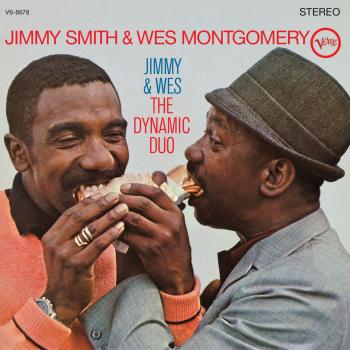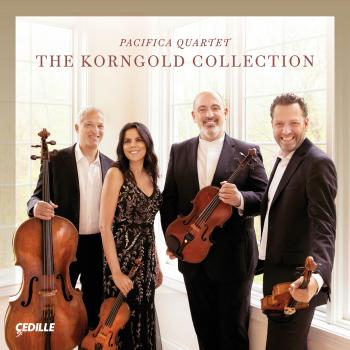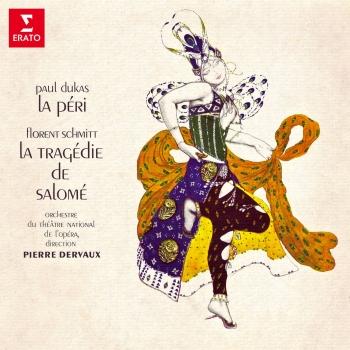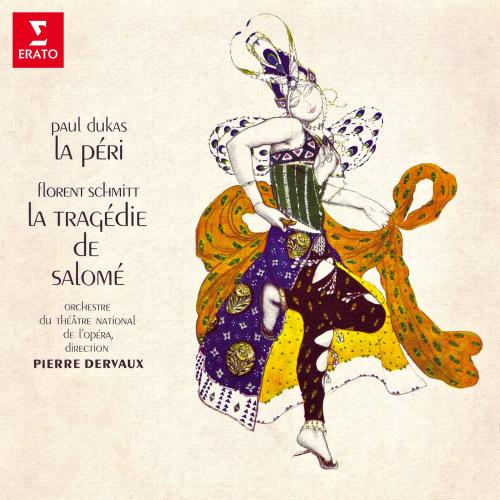
Dukas: La Péri - Schmitt: La tragédie de Salomé (Remastered) Orchestre du Théâtre national de l'Opéra de Paris & Pierre Dervaux
Album info
Album-Release:
2020
HRA-Release:
25.09.2020
Label: Warner Classics
Genre: Classical
Subgenre: Ballet
Artist: Orchestre du Théâtre national de l'Opéra de Paris & Pierre Dervaux
Composer: Paul Dukas (1865-1935)
Album including Album cover
I`m sorry!
Dear HIGHRESAUDIO Visitor,
due to territorial constraints and also different releases dates in each country you currently can`t purchase this album. We are updating our release dates twice a week. So, please feel free to check from time-to-time, if the album is available for your country.
We suggest, that you bookmark the album and use our Short List function.
Thank you for your understanding and patience.
Yours sincerely, HIGHRESAUDIO
- Paul Dukas (1865 - 1935): La Péri:
- 1 La Péri: Fanfare 02:22
- 2 La Péri: Poème dansé 19:16
- Florent Schmitt (1870 - 1958): La tragédie de Salomé, Op. 50:
- 3 La tragédie de Salomé, Op. 50: I. Prélude 09:53
- 4 La tragédie de Salomé, Op. 50: II. Danse des perles 03:40
- 5 La tragédie de Salomé, Op. 50: III. Les enchantements de la mer 09:59
- 6 La tragédie de Salomé, Op. 50: IV. Danse des éclairs 03:36
- 7 La tragédie de Salomé, Op. 50: V. Danse de l'effroi 01:45
Info for Dukas: La Péri - Schmitt: La tragédie de Salomé (Remastered)
Dukas: The original music to La Péri was written in 1911 by Paul Dukas as a Poème dansé en un tableau ("dance poem in one scene"), his last published work. Although not as well known as his famous symphonic poem The Sorcerer's Apprentice, the ballet has been considered to be one of his most mature and skilled pieces. The music's style can best be described as a mixture of Romantic tonal harmony and orchestration techniques with Impressionism, and is distinctly French. The ballet itself is preceded by a brilliant fanfare that uses the orchestra's brass section, and which is often performed separately.
A mystery surrounds the genesis of Dukas’s La Péri, which was described when published as a poème dansé (danced poem) although he told his friend Pierre Lalo (a prominent music critic) that he “might call it whatever you want—pantomime, ballet, danced scene.” He also revealed to Lalo, “I had lost a wager; to pay off my debt, I had to promise to write this thing.” The word he used was gageure, which might mean just a “challenge”; but given the context of that statement, it does appear to have been an actual bet—though we know not with whom or over what. Perhaps it involved, directly or indirectly, Natacha Trouhanova, born in Kiev in 1885, who had entered the Moscow Conservatory’s acting program but, beset with frequent laryngitis, turned instead to dance. She arrived in Paris in 1907, creating a sensation dancing the Bacchanale in Saint-Saëns’s Samson et Dalila at the Opéra. She danced in Parisian establishments of varying aesthetic persuasions—not only the Opéra but also the Folies Bergère and, beginning in 1911, Sergei Diaghilev’s Ballets Russes.
This “archangel” (as Dukas called her) was with Diaghilev’s company when he wrote La Péri for her—and dedicated the score to her, and gave her sole performing rights to it for five years. The work was to be unveiled in a four-performance run in June 1911, but plans went awry as the date approached, apparently due to a contractual dispute between Trouhanova and Diaghilev. The impresario cancelled the planned premiere, limiting the run to three go-rounds—to none of which critics would be admitted. The press went berserk, Trouhanova went into a sulk, and Dukas withdrew his score. Diaghilev offered to mount it immediately in London and then in an American tour—offers Dukas met with refusal.
Schmitt: La tragédie de Salomé originated in a commission from the writer Robert d’Humières to produce an accompaniment for a scenario about the Jewish princess which he had written for the dancer Loie Fuller (celebrated in verse by W B Yeats). This Schmitt fulfilled with the completion in November 1907 of a ballet for a small orchestra of twenty players. Strauss’s opera had received its first Paris performance only six months before, but d’Humières’ scenario does not follow the Oscar Wilde version of the story of Salome, her lust for the prophet Jochanaan (John the Baptist) and her dance before Herod which formed Strauss’s libretto. Indeed, d’Humières conceived his work as a kind of moral answer to Wilde’s supposed amorality. In his version the action centres on Salome dancing for Herod—which she does in a whole series of dances that arouse his ardour. According to d’Humières, though, Salome is essentially innocent, obedient to her mother. She does not desire the execution of the prophet and casts away his head in horror, only to be pursued by a phantom of it which drives her to a frenzy of guilt and fear. Thus the title: ‘The tragedy of Salome’.
The ballet was rapturously received and ran for fifty performances. In 1909 Schmitt made a symphonic suite for large orchestra, comprising about half of the original music, and it is this version, which was not performed until 1911, which has become comparatively well known. (Schmitt himself conducted a recording of it in 1930.) In April 1912 it—the suite, not the full ballet, which was not revived until recent times—was staged, not by Diaghilev but by the short-lived rival company of Natasha Trouhanova, at the Théâtre du Châtelet in an evening of French ballet that also included Ravel’s Valses nobles et sentimentales, d’Indy’s Istar and Paul Dukas’s La Péri. Schmitt’s work was the sensation of the four, and this success, coupled with Stravinsky’s advocacy, led to a spectacular staging in 1913 by the Ballets russes with sets and costumes by Serge Sudeykin (whose wife, Vera de Bosset, would eventually become Stravinsky’s second wife).
Orchestre du Théâtre national de l'Opéra de Paris
Pierre Dervaux, conductor
Digitally remastered
No biography found.
This album contains no booklet.




